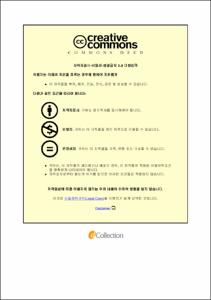항바이러스제 치료 중인 만성 B형 간염 환자의 신기능의 종단적 변화
- Alternative Title
- Longitudinal Changes in Renal Function in Patients with Chronic Hepatitis B on Antiviral Treatment
- Abstract
- Background: Patients with chronic hepatitis B (CHB) on nucleos(t)ide analogues (NUCs) often experience renal function decline. Conflicting results regarding the impact of NUC use and renal function have recently been reported. We aimed to examine longitudinal changes in renal function according to the NUC treatment type compared with untreated patients. Methods: From 2014 to 2022, 10,642 patients with CHB were retrospectively analyzed. The primary outcome was chronic kidney disease (CKD) progression, which was defined as a minimum one-stage elevation. Propensity score (PS) matching was employed for outcome comparisons. Results: In the PS-matched cohort of 1,996 pairs, the NUC-treated group (7.6/100 person-years [PYs]) had a significantly higher CKD progression risk than the untreated group (4.4/100 PYs), with a hazard ratio (HR) of 1.70 (P<0.001). The tenofovir disoproxil fumarate (TDF)-treated group (7.9/100 PYs) showed a 1.76-fold increased CKD progression risk compared with the untreated group (4.5/100 PYs) in the PS-matched cohort (P<0.001). Both the entecavir (ETV)- and tenofovir alafenamide (TAF)- treated groups showed CKD progression risks comparable to those of the untreated group in the PS- matched cohorts of 755 and 426 pairs, respectively (P=0.132 and P=0.120, respectively). No significant CKD progression risk was found between the ETV- (6.0/100 PYs) and TAF-treated (5.2/100PYs) groups in the PS-matched cohort of 510 pairs (P=0.118). Conclusion: NUC-treated patients, especially those on TDF, faced a higher CKD progression risk than untreated patients. ETV- and TAF-treated patients presented comparable CKD progression risks to untreated patients. No difference was observed between ETV and TAF in the risk of CKD progression.|연구배경: 뉴클레오시(티)드 유사체(Nucleos(t)ide, NUC)를 복용하는 만성 B 형 간염 환자는 종종 신기능 저하를 경험한다. 최근 NUC 복용이 신기능에 미치는 영향에 대해 상충된 결과가 보고되었다. 이에 본 연구는 치료하지 않는 만성 B형 간염 환자와 NUC 종류에 따른 신기능의 종단적 변화를 알아보고자 하였다. 연구방법: 2014 년부터 2022 년까지 만성 B 형 간염 환자 10,642 명을 후향적으로 분석하였다. 일차 결과는 만성 신질환의 진행으로, 최소 한 단계 이상의 신기능 악화로 정의하였다. 성향점수 매칭(Propensity score matching) 방법을 사용하여 비치료군과 NUC 종류에 따른 치료군을 각각 비교하였다. 연구결과: 1,966 쌍의 성향점수(PS) 일치 코호트에서 NUC 치료군(7.6/100 인년)의 만성 신질환 진행 위험 비율은 비치료군(4.4/100 인년)보다 유의하게 높았으며, 위험비(hazard ratio)는 1.70 이었다(p<0.001). 테노포비르 디소프록실 푸마르산염(TDF) 치료군(7.9/100인년)은 PS 일치된 비치료군(4.5/100인년)과 비교하여 1.76배 높은 만성 신질환 진행 위험을 보였다(p<0.001). 엔테카비르(ETV)와 테노포비르 알라페나미드(TAF) 치료군은 PS 일치 코호트 755쌍과 426쌍에서 모두 비치료군과 비슷한 만성 신질환 진행 위험을 보였다(각각 p=0.132 와 p=0.120). 엔테카비르(ETV) 치료군(6.0/100 인년)과 테노포비르 알라페나미드(TAF) 치료군(5.2/100 인년)을 비교한 PS 일치 코호트 510쌍에서는 유의미한 만성 신질환 진행 위험 차이는 확인되지 않았다(p=0.118). 연구결론: NUC 치료군, 특히 테노포비르 디소프록실 푸마르산염(TDF) 치료군이 비치료군보다 만성 신질환 진행 위험이 유의미하게 높았다. 엔테카비르(ETV) 및 테노포비르 알라페나미드(TAF) 치료군은 비치료군과 비슷한 만성 신질환 진행 위험을 보였다. 엔테카비르(ETV)와 테노포비르 알라페나미드(TAF) 치료군 사이에는 유의미한 차이가 관찰되지 않았다.
- Issued Date
- 2024
- Awarded Date
- 2024-02
- Type
- Dissertation
- Alternative Author(s)
- Minjoo Cho
- Affiliation
- 울산대학교
- Department
- 일반대학원 의학과
- Advisor
- 임영석
- Degree
- Master
- Publisher
- 울산대학교 일반대학원 의학과
- Language
- eng
- Rights
- 울산대학교 논문은 저작권에 의해 보호받습니다.
- Appears in Collections:
- Medicine > 1. Theses (Master)
- 파일 목록
-
-
Download
 200000731922.pdf
기타 데이터 / 1.53 MB / Adobe PDF
200000731922.pdf
기타 데이터 / 1.53 MB / Adobe PDF
-
Items in Repository are protected by copyright, with all rights reserved, unless otherwise indicated.